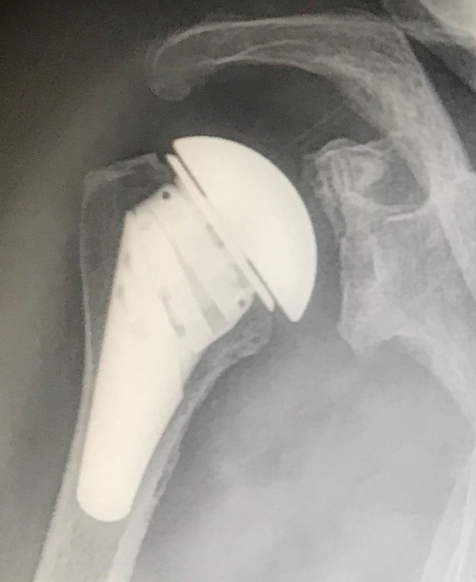
Shoulder Arthritis
Shoulder Arthritis
Introduction
Shoulder arthritis is a common cause of shoulder pain in adults. It typically occurs in older patients as a result of degenerative changes to the shoulder cartilage. However, there are many other causes of arthritis including trauma, rheumatic disease, and rotator cuff disease. The most common type of shoulder arthritis is osteoarthritis.

Symptoms/Signs
Most patients experience pain and limited range of motion. Pain may be worsened with activity but also occurs at rest. Commonly, patients experience clicking and catching sensations with movement. The ability to perform normal activities may be affected including getting dressed and reaching into cabinets. Progressive worsening with time is typical.
Evaluation
Your orthopedic surgeon will review the history of your shoulder pain and perform a physical exam. X-rays are the primary imaging technique used to evaluate the bones of the shoulder and diagnose arthritic conditions. Loss of joint space and bone spurs are common findings of shoulder arthritis. Magnetic resonance imaging (MRI) and computed tomography (CT) may be ordered as adjunct imaging and can provide additional information related to your diagnosis and treatment.
Treatment
Non-Operative Treatment
The majority of patients can be treated non-operatively. Activity modification and non-steroidal anti-inflammatory medications are often prescribed. Physical therapy may help decrease pain and improve range of motion. Steroid injections into the shoulder joint may be considered to temporarily decrease pain and inflammation. Patients with rheumatic diseases are often prescribed disease-modifying medications.
Surgical Treatment

Your orthopedic surgeon will determine if surgery is indicated and discuss the risks and benefits with you. Surgery can be performed either in the hospital setting or in an ambulatory surgery center depending on a patient's general health. Surgery often involves replacing the worn out cartilage and is known as shoulder replacement (arthroplasty). Minimally invasive surgery is an option for some patients as well. After surgery, your shoulder is immobilized for a period of time in a sling to allow it to heal. Your doctor may prescribe physical therapy to aid in your rehabilitation. Most patients experience significant pain relief and improved function after surgery.
